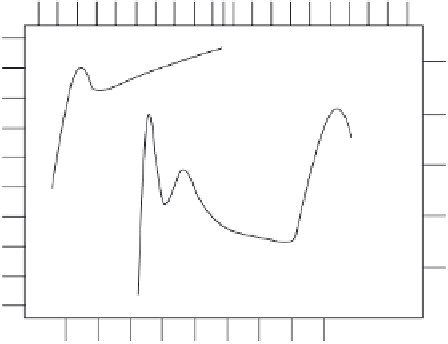Biomedical Engineering Reference
In-Depth Information
Photon energy (eV)
1.4
1.5
1.6
10
GasAs
4
3
2
5
1
MQW
0
0
850 800
Wavelength (nm)
FIGURE 3.18
Linear absorption spectra of room-temperature GaAs and MQW samples. (After Miller, D.A.B.
et al.,
Appl. Phys. Lett
., 41(8), 679, 1982.)
and consequent avoidance of the exciton dissociation until the higher than
normal field strengths. These effects are illustrated in the Figure 3.19.
3.11 QuantumWellOscillators
Considerable potential exists for applications of the exciton resonance
in MQWS. MQWS are constructed from alternating layers of GaAs and
Al
x
Ga
1 −
x
As. When an optical wave is sent through an MQWS, an optical
absorption peak which initially creates excitons can be observed near the
optical band edge. Excitons are particles described by wave packets made
up of electron conduction band states and hole valence band states.
There are two different types of excitons that exist in MQWS. One is an
electron-light hole exciton and the other is an electron-heavy hole exciton.
Whenever we refer to a “hole” it can be either a heavy hole or a light hole.
The excitons that are trapped in the QWs have discrete energy levels that
can be described quantum mechanically as the energy levels of a “particle
in a box.”
An induced electric field perpendicular to the MQWS layers tends to reduce
these energy levels, shifting the absorption peaks to lower frequencies. This
shifting effect is nonlinear and smaller for smaller fields. This behavior is






Search WWH ::

Custom Search